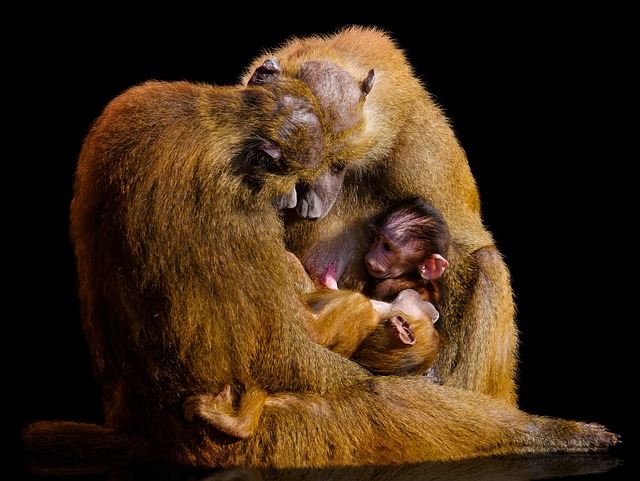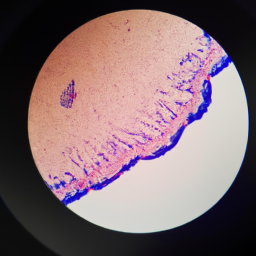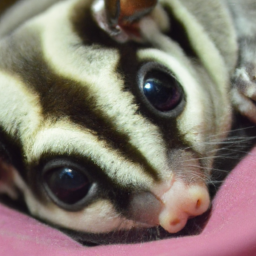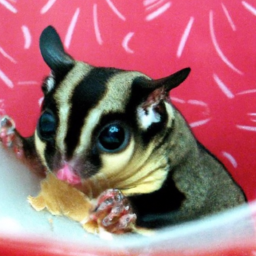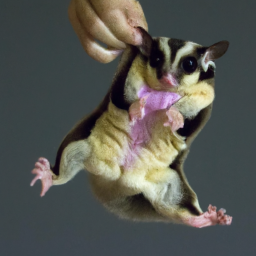How To Tell If A Sugar Glider Is Happy
In this article, you will discover some useful tips on how to tell if a sugar glider is happy. I will guide you through various indicators that can help you understand your pet’s emotions better. We will discuss signs like active behavior, vocalizations, body language, and their interactions with you and other gliders. By the end, you will have a better understanding of your sugar glider’s happiness and how to ensure their well-being.
How To Tell If A Sugar Glider Is Happy
Introduction to Sugar Gliders
If you’re a sugar glider owner, you probably understand how important it is to ensure the happiness and well-being of your pet. Sugar gliders are small, nocturnal marsupials native to Australia, Indonesia, and New Guinea. These adorable creatures are known for their social nature and unique ability to glide through the air using a flap of skin called a patagium. In this article, we will explore the basic characteristics of sugar gliders and discuss how to monitor their happiness.
Basic Characteristics of Sugar Gliders
Before diving into the indicators of sugar glider happiness, it’s essential to familiarize yourself with the fundamental characteristics of these delightful animals. Sugar gliders typically weigh between 3.5 to 5.5 ounces and measure around 6 inches from their nose to the base of their tail. They have a lifespan of about 12 to 15 years when well-cared for. Sugar gliders are highly social animals that require companionship from their own species or human caregivers. As responsible owners, it is essential for us to monitor and ensure their happiness.
Importance of Monitoring Sugar Glider Happiness
Monitoring the happiness of your sugar glider is crucial to their overall well-being. When a sugar glider is happy, they are more likely to exhibit healthy behaviors and have a higher quality of life. By observing specific physical, social, environmental, and emotional indicators of happiness, you can better understand your pet’s needs and provide the care and attention they require.
Physical Indicators of Happiness
Active and Energetic Behavior
One of the easiest ways to determine if your sugar glider is happy is to observe their activity levels. A content sugar glider will be active and energetic, spending much of their waking hours exploring, playing, or gliding around their enclosure. If you notice your glider constantly engaging in playful behaviors, such as running, climbing, and jumping, it is a positive sign that they are happy and enjoying their environment.
Smooth and Glossy Fur
The condition of your sugar glider’s fur can also indicate their happiness. A healthy and content glider will have smooth and glossy fur. Check for any signs of bald patches, dryness, or excessive shedding, as these may be signs of stress or poor health. Regular grooming and a well-balanced diet contribute to their fur’s appearance, so paying attention to their fur condition is essential in assessing their overall happiness.
Healthy Body Weight
Maintaining a healthy body weight is crucial for the well-being of sugar gliders. An underweight or overweight sugar glider may experience health issues and show signs of unhappiness. As an owner, you should monitor your glider’s weight regularly and consult with a veterinarian to ensure they are within the appropriate range for their age and size. A happy sugar glider will have a healthy, well-maintained body weight.
Vibrant Eyes and Ears
The eyes and ears of a sugar glider can provide valuable insights into their emotional well-being. Happy sugar gliders typically have bright and alert eyes with no signs of redness or discharge. Additionally, their ears should be clean and free from any signs of infection or irritation. If you notice your glider’s eyes or ears showing any abnormalities, it is essential to seek veterinary care to address potential underlying health issues.
Social Signs of Happiness
Barking and Vocalization
Sugar gliders are highly vocal creatures, and their vocalizations can indicate their level of happiness. A happy sugar glider often expresses its contentment through soft chirping and barking sounds. These vocalizations are usually a sign of joy and indicate that your glider is comfortable and feeling secure in its environment. However, it’s important to note that excessive or repetitive vocalizations may be a cause for concern and should be evaluated by a veterinarian.
Playfulness and Affection
Another way to assess your sugar glider’s happiness is by observing their playfulness and affectionate behaviors. Happy gliders will engage in playful activities such as climbing, swinging on branches, and playing with toys or their cage mate. They may also display affection by nuzzling, grooming, or cuddling with their companions. These playful and affectionate interactions are indications that your glider is content and enjoying a positive social environment.
Grooming and Mutual Bonding
Sugar gliders are naturally sociable animals and form strong bonds with their human caregivers and cage mates. A happy sugar glider will actively engage in grooming behaviors, both for personal hygiene and as a way to bond with others. Mutual grooming is particularly important for gliders as it strengthens their social connections and contributes to their overall happiness. If your glider is actively grooming themselves and their cage mates, it is a positive sign of their contentment.
Feeding and Dietary Clues
Enthusiasm during Mealtime
Observing your sugar glider’s behavior during mealtime can provide valuable insights into their happiness. A happy glider will exhibit enthusiasm and eagerness when presented with their food. They may display excitement by tapping their feet or making chirping sounds while eating. On the other hand, a lack of appetite or disinterest in food can be indicators of an underlying health issue or stress. Monitoring their feeding habits and ensuring a varied and balanced diet are crucial for their overall well-being.
Variety in Diet
A varied diet is essential to meet the nutritional needs of sugar gliders. Happy gliders will have access to a wide variety of fresh fruits, vegetables, insects, and a specialized sugar glider pellet diet. Providing a diverse range of food options not only ensures their nutritional needs are met but also promotes mental stimulation and happiness. It’s important to consult with a veterinarian or a glider-experienced specialist to create a balanced diet plan suitable for your glider’s needs.
Balanced Nutritional Intake
In addition to offering a variety of foods, it’s important to ensure that your sugar glider’s diet is nutritionally balanced. A happy glider will consume an appropriate amount of food each day and maintain a healthy weight. It is essential to monitor their eating habits and make adjustments to their diet if necessary. A knowledgeable veterinarian can guide you in determining the correct portion sizes and nutritional requirements for your glider’s well-being.
Environmental Factors
Spacious and Stimulating Enclosure
The environment in which your sugar glider lives plays a significant role in their happiness. Sugar gliders require a spacious, clean, and stimulating enclosure to thrive. Providing ample space for activities such as climbing, gliding, and exploring is crucial for their mental and physical well-being. An enriched environment that includes toys, branches, and tunnels can contribute to their happiness and prevent boredom.
Access to Climbing Structures
Sugar gliders are natural climbers and require opportunities to exercise their climbing instincts. Providing them with climbing structures such as branches, ropes, and vertical tunnels allows them to engage in their natural behavior and provides mental stimulation. A happy sugar glider will utilize these structures, showing a keen interest in climbing and exploring their environment.
Proper Temperature and Humidity
Maintaining the appropriate temperature and humidity levels within the sugar glider’s enclosure is essential for their comfort and happiness. Sugar gliders require a warm and humid environment similar to their native habitats. Regularly monitor the temperature and humidity levels, and provide heating or cooling options as needed. A sugar glider that is content with its environment will exhibit an active and alert demeanor, thrive, and exhibit fewer signs of stress or discomfort.
Health and Hygiene
Regular Vet Checkups
Regular veterinary check-ups are critical in ensuring your sugar glider’s health and happiness. Routine examinations allow for early detection and treatment of any potential health issues. A happy sugar glider will exhibit good overall physical condition during these check-ups, with no signs of pain, illness, or discomfort. Your veterinarian can provide guidance on vaccination schedules, parasite prevention, and general wellness care.
Clean and Odor-Free Living Space
Maintaining a clean and odor-free living space is essential for the happiness of your sugar glider. Regularly cleaning their enclosure, changing bedding, and providing fresh water and food help prevent the buildup of bacteria and unpleasant odors. Gliders thrive in a clean and hygienic environment, allowing them to exhibit their natural behaviors and reducing the risk of health issues.
Well-Maintained Physical Condition
Monitoring your sugar glider’s physical condition is vital in ensuring their happiness and well-being. Regularly check their eyes, ears, fur, teeth, and nails for any abnormalities or signs of distress. Their body should be free from wounds, injuries, or any visible signs of illness. A content sugar glider will present a healthy and well-maintained physical appearance.
Sleeping Patterns
Consistent and Peaceful Sleep
Sugar gliders are nocturnal animals and sleep during the day. Observing their sleeping patterns can help determine their happiness. A happy sugar glider will have consistent and peaceful sleep patterns without excessive restlessness or disturbances. If you notice irregular sleep behaviors or signs of insomnia, it may be an indication of stress or discomfort and should be addressed promptly.
Safe and Comfortable Sleeping Spots
Providing safe and comfortable sleeping spots is crucial for your sugar glider’s happiness. Sugar gliders require cozy, enclosed spaces to rest and feel secure. Offering a variety of sleeping options such as nesting pouches, fleece blankets, or coconut shells allows them to choose their preferred spot. A happy sugar glider will utilize these sleeping areas regularly, displaying no signs of anxiety or restlessness during sleep.
Emotional Well-being
Content and Relaxed Body Language
Observe your sugar glider’s body language to assess their emotional well-being. A happy sugar glider will display relaxed body postures, such as a rounded back, gently swaying tail, and partially closed eyes. They may also sit comfortably in your hand or on your shoulder without signs of fear or agitation. These content body language indicators demonstrate that your glider feels safe, comfortable, and connected with you as their caregiver.
Absence of Stress-Related Behaviors
Stress-related behaviors can often indicate unhappiness or discomfort in sugar gliders. Signs of stress may include excessive chewing, biting, pacing, self-mutilation, or feather plucking in extreme cases. A happy sugar glider will exhibit minimal to no signs of stress-related behavior. Address any potential stressors in their environment promptly and provide appropriate mental and physical stimulation to ensure their emotional well-being.
Trust and Bonding with Human Companions
Building trust and bonding with your sugar glider is crucial for their happiness. A happy sugar glider will show signs of trust and bonding by seeking interaction, accepting food from your hand, or climbing onto you without fear or hesitation. Encouraging positive social interactions and providing regular, gentle handling can strengthen the bond between you and your glider, leading to a happier and more fulfilled pet.
Observing Behavior Changes
Keep Track of Unusual Patterns
As a responsible sugar glider owner, it’s important to monitor your glider for any behavior changes that could indicate their unhappiness. Keep track of any unusual patterns, such as changes in appetite, activity level, grooming habits, or social interactions. These changes may be subtle indicators of stress, discomfort, or underlying health issues. Regular observation and documentation of these patterns will aid in early detection and prompt intervention.
Noting Signs of Distress or Discomfort
Sugar gliders are sensitive creatures, and even minor discomfort can impact their happiness. It’s crucial to note any signs of distress, including excessive vocalization, hiding, avoiding interaction, biting, or over-grooming. Identifying these signs early can help you address the underlying issue and restore your glider’s happiness. Seeking guidance from a veterinarian or a glider-experienced specialist is recommended if you observe persistent signs of distress or discomfort.
Can the Gender of a Sugar Glider Affect Its Happiness?
When it comes to telling sugar glider gender, it’s important to consider how it might affect their happiness. While gender may not directly impact their overall happiness, social dynamics within a group of sugar gliders can be influenced by the mix of males and females.
Conclusion
Ensuring the happiness and well-being of your sugar glider is a crucial responsibility as their owner. By monitoring specific physical, social, dietary, environmental, and emotional indicators, you can gauge your glider’s happiness and make necessary adjustments to their care. Creating a loving and stimulating environment, providing responsive care and attention, and seeking professional guidance when needed will ultimately lead to a happier and more fulfilled life for your sugar glider.



